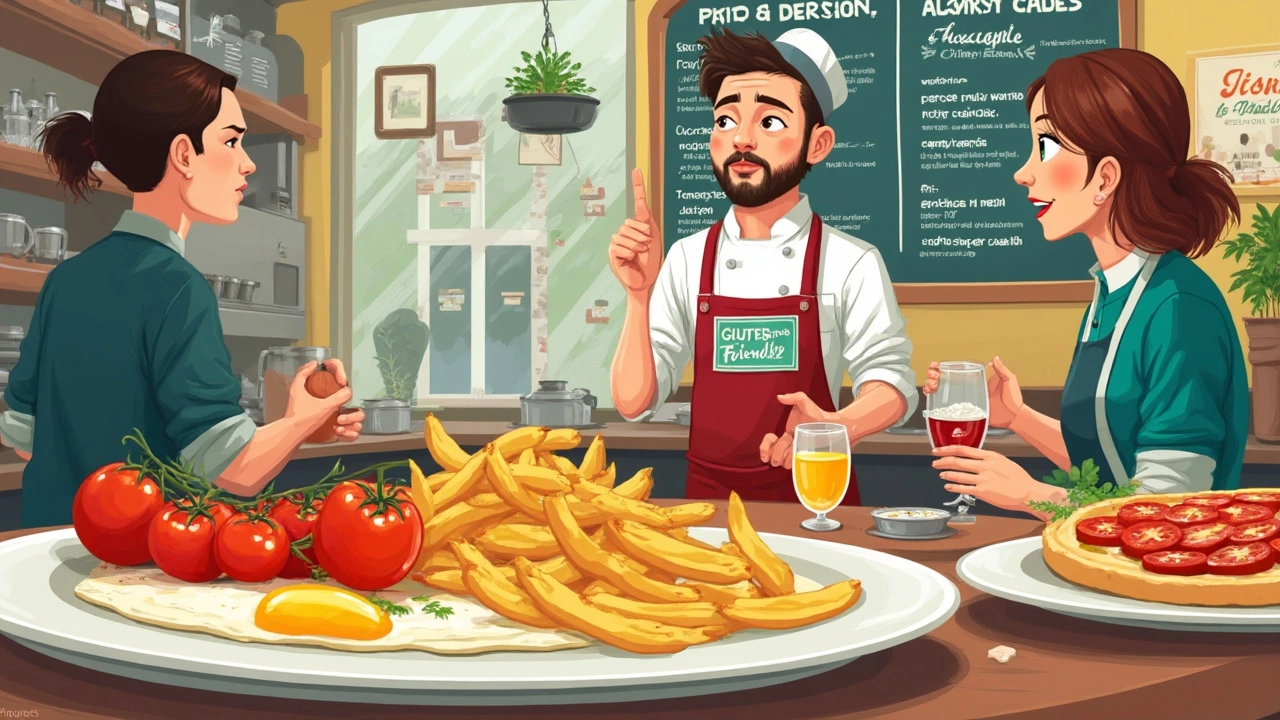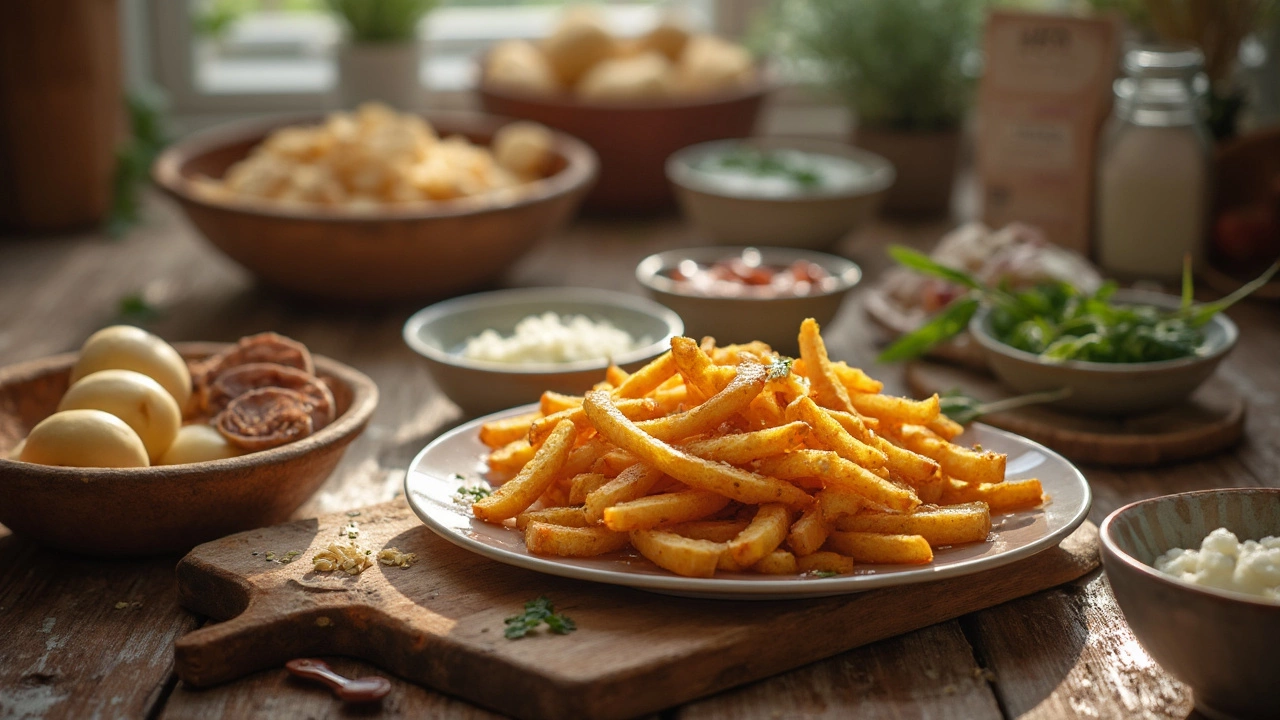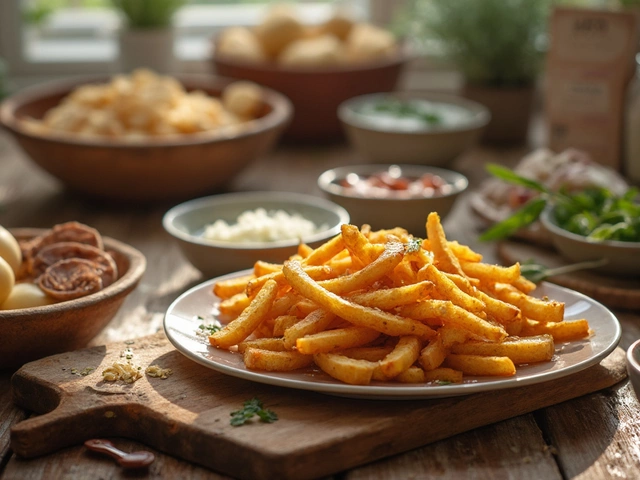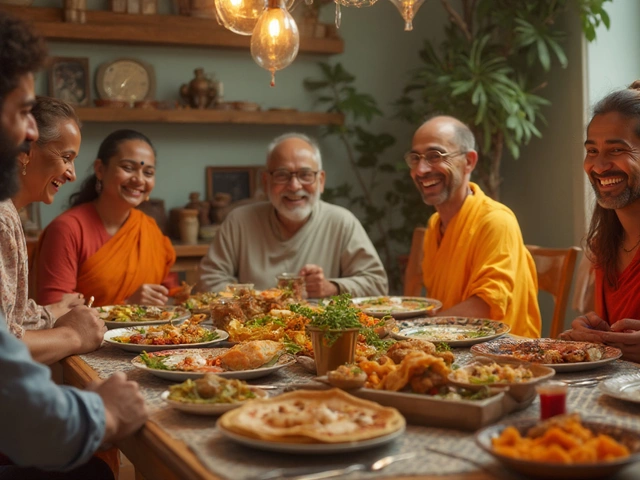Ordering home fries and wondering if you’re about to get hit with gluten? You’re not alone. Every guy who’s ever asked a server about gluten at brunch knows the struggle—it’s always better to ask than guess.
So here’s the thing: potatoes are naturally gluten free. If you’re frying up chopped potatoes in your own skillet with some oil and salt, you’re in the clear. But once you wander into a restaurant or use a mix from the store, things can change fast. Sometimes cooks dust home fries with flour for extra crunch. Sometimes, that fryer in the back has breadcrumbs or battered stuff in it. Suddenly, your “safe” potatoes aren’t so safe anymore.
The bottom line: home fries can be gluten free, but you’ve got to check what else sneaks in. Want to know how to keep your plate safe? Stick around—let’s get specific so you can eat without stress.
- What Are Home Fries?
- Which Ingredients Contain Gluten?
- How Restaurants Prepare Home Fries
- Hidden Gluten Risks to Watch Out For
- How To Make Gluten Free Home Fries
- Tips for Eating Gluten Free at Diners and Cafes
What Are Home Fries?
Home fries are a breakfast classic in North America. You’ll find them on diner menus everywhere. They’re usually made by chopping up potatoes—skin on or off, depending on the spot—into cubes or thin slices, then pan-frying them until crispy. Sometimes onions, bell peppers, or a sprinkle of paprika join the party, but the backbone is always the home fries themselves: potatoes.
These aren’t the same as hash browns, which are usually shredded and formed into patties. Home fries are chunkier. They soak up flavor from the pan, which usually means a bit of cooking oil and whatever spices or veggies the cook feels like adding that day. Here’s how you’ll typically see them made at home or at most restaurants:
- Chopped raw potatoes (sometimes parboiled first)
- Cooking oil or butter for frying
- Seasonings (salt, pepper, paprika, or garlic powder)
- Optional add-ins like onions, peppers, or herbs
Take a look at some typical home fries facts:
| Fact | Details |
|---|---|
| Common serving size | 1 cup (about 150 grams) |
| Average calories (plain) | 210 kcal |
| Traditional core ingredients | Potatoes & oil |
| Gluten free by default? | Yes, unless extras are added |
| Popular add-ins | Onions, peppers, spices |
If you’re making them yourself, you control what goes in. But at restaurants, recipes can change. Some places add a coating or seasonings with wheat flour, and sometimes the cooking oil gets reused for other fried foods—so cross-contamination’s a thing to watch for. Not all home fries are created equal, so reading ingredients or asking questions is always smart.
Which Ingredients Contain Gluten?
The main thing you need to know is this: plain potatoes themselves are totally gluten free. Where things get risky is with add-ins, coatings, and any cross-contamination in the kitchen.
Most classic home fries recipes use simple stuff—potatoes, oil, salt, pepper, maybe onions or peppers. None of these are a problem. But if you see ingredients like these, you need to be on alert:
- Flour or seasoned flour – Sometimes restaurants toss potatoes in a little flour or a breading mix. That’s pure gluten territory if they’re using wheat flour, which is super common.
- Breading mixes – These can show up if someone’s trying to amp up crispiness. Unless it’s labeled gluten free, it’s almost always wheat-based.
- Gravy or sauce – Some home fries come smothered, and that gravy often uses wheat flour as a thickener.
- Shared cooking oil – If home fries go into the same fryer as breaded chicken or onion rings, you’ve got a cross-contamination problem. This trips up a lot of folks eating out.
- Packaged or frozen home fries – Always check labels. Some brands toss in wheat for texture or preservatives you wouldn’t expect.
Let’s break down the most common gluten offenders you might find mixed into or served with home fries:
| Ingredient | Gluten Risk? | Where It Shows Up |
|---|---|---|
| Wheat Flour | Yes | Breading, crispy coatings |
| Bread Crumbs | Yes | Toasted toppings, crispy mixes |
| Soy Sauce | Sometimes | Unusual seasonings, certain house blends |
| Prepared Gravies/Sauces | Usually | On top or as a side |
| Spice Blends | Possible | Some spice brands add wheat starch |
| Cross-Contamination in Oil | Yes | Restaurant deep fryers |
If you’re at home, you control every ingredient, which makes it a breeze to keep things gluten free. If you’re eating out, ask the staff about flour, breading, and those sneaky shared fryers. Just a quick question can save you a ton of hassle later.
How Restaurants Prepare Home Fries
Walk into any diner or breakfast spot, and you’ll see home fries popping up on most menus. But here’s the thing—not all restaurants make them the same way. Some spots stick to just potatoes, oil, salt, and pepper. Others add onions or red peppers for extra flavor. Simple enough, right?
But here’s where it gets tricky for anyone avoiding gluten. Many kitchens want crispier home fries, so they’ll dust the chopped potatoes with a little flour before tossing them in the pan. Sometimes it’s regular wheat flour, sometimes it’s a pre-made seasoned mix from a bag. Both can add gluten where you least expect it.
Another catch? The fryer. Lots of places use the same oil for many items. If your home fries share a fryer with breaded chicken, hash browns, or onion rings, there’s cross-contact. Even if the ingredients themselves have no gluten, the oil can pick some up from other foods. You probably won’t see this on the menu, but it happens a lot in busy kitchens.
If you need your home fries to be truly gluten free, here’s what to ask at the restaurant:
- How are the home fries prepared—just potatoes, or is anything else added?
- Is there any flour, breading, or seasoning mix mixed in?
- Are the fries cooked on a shared grill or fryer with foods containing gluten?
Some places will offer to bake or pan-fry your home fries in a clean pan. Don’t be shy about asking—restaurants get these questions all the time. And for anyone with celiac or a gluten allergy, even a small amount of cross-contact can be a problem. Next time you’re eating out, double-check. Your gut will thank you.

Hidden Gluten Risks to Watch Out For
It sounds simple—potatoes, oil, salt—and you’re set with gluten free home fries. But here’s where people get tripped up. Gluten can sneak in from places that have nothing to do with potatoes themselves.
If you’re eating at a diner, double-check how the home fries are cooked. More than half of chain restaurants use shared fryers, which means fries could end up with trace gluten from breaded foods like onion rings or chicken nuggets being cooked in the same oil. That’s cross-contamination city.
- Shared Fryers: Even if the home fries ingredients are gluten free, using a fryer that cooks both battered and non-battered foods can cause problems. This is really common in breakfast spots.
- Flour or Seasoning Mixes: Some cooks add a dusting of flour or pre-mixed seasoning blends that often have wheat in them. Even a tiny amount is a big deal if you’re eating gluten free.
- Grill & Surface Contamination: Restaurants sometimes cook pancakes, bread, or hash browns on the same grill as your home fries. It doesn’t take much residue to pass on gluten.
- Packaged Home Fries: If you grab frozen home fries or breakfast potatoes at the store, check that label. According to a 2024 consumer report, about 30% of frozen potato products contain wheat as a stabilizer or anti-caking agent.
Curious where the numbers land? Take a look at this quick breakdown:
| Risk | Chance of Gluten Exposure |
|---|---|
| Shared Restaurant Fryer | High (about 60% of U.S. diners use shared fryers) |
| Flour-Coated Fries | Moderate (15-20% will use flour for crisp) |
| Store-Bought/Frozen Mix | Moderate (1 in 3 brands add wheat products) |
| Home-Cooked, Basic Ingredients | Low (if you control the kitchen) |
If you need to stay gluten free, always ask the staff about their fryer and what goes into their seasoning. And when you buy anything frozen, scan that label for hidden wheat or malt. It only takes a slip-up to mess up your meal or even your week.
How To Make Gluten Free Home Fries
Good news: you don’t need anything special to make gluten free home fries in your own kitchen. Potatoes are naturally gluten free, so just skip any breading or flour. Grab your potatoes, and you’re halfway there.
Here’s a foolproof method that won’t mess up your kitchen or your stomach:
- Peel (or don’t—totally your call) and dice some russet, Yukon gold, or red potatoes. About ½- to 1-inch cubes work best for even cooking.
- Rinse the raw potato pieces in cold water. This step takes off extra starch so you get a crispy finish and less sticking.
- Parboil the potatoes in boiling water for about 4 minutes and then drain. This part isn’t 100% required, but it does help create that restaurant-style texture.
- Heat a skillet (cast iron is awesome for this), add a couple tablespoons of oil (avocado or olive oil are great), and toss in the drained potato cubes.
- Season with salt, black pepper, paprika, and maybe some garlic powder or onion powder. Just check your spices to make sure none have mystery additives containing gluten. Most pure spices are fine, but some blends sneak in wheat flour or anti-caking agents.
- Cook over medium-high heat, stirring just enough to avoid sticking, until the potatoes are golden and crispy—usually about 15–20 minutes. Add chopped onions or bell peppers near the end if you want more flavor.
Pro tip: If you want to get fancy, finish the potatoes on a sheet pan in a hot oven for five minutes. This dries them out a bit more, making them extra crispy.
Always double check any packaged ingredients you use, especially spice mixes or pre-chopped veggies. Some brands toss in stabilizers that might have gluten. Read the label every time.
Keep your tools separate if someone in your house is super sensitive to gluten. Shared spatulas or cutting boards can be a problem if you’ve used them for bread or battered foods before.
And if you’re adding other toppings—like cheese, hot sauce, or ketchup—glance at those labels too. Sticking to clean basics means your home fries stay safe and delicious.
Tips for Eating Gluten Free at Diners and Cafes
Eating out and trying to avoid gluten can feel like a gamble if you’re not careful, especially with something as basic as home fries. Even if potatoes themselves are safe, how they’re cooked is a game changer. Here’s how you can keep your breakfast plate stress-free:
- Home fries are not automatically gluten free—always double-check the menu or with the staff to be sure.
- Ask flat-out if the fries are cooked in a shared fryer. Many diners use the same oil for breaded food and potatoes.
- Request your home fries to be cooked on a clean grill or in a clean pan, with fresh oil if possible. Many kitchens are used to these requests nowadays.
- Watch for that sneaky coating—sometimes diners toss potatoes in flour or seasoned blends (like Lawry’s or big commercial mixes) that might have wheat or barley.
- If you’re not sure, go for hash browns. They’re usually just shredded potatoes, but always check—they can get hit with the same cross-contamination.
Here’s a quick table showing what to ask and watch out for when you’re out eating:
| What to Ask | Why |
|---|---|
| Shared Fryer? | Gluten from breaded foods can end up in the oil. |
| Any Flour, Breadcrumbs, or Seasoned Coating? | Some places coat home fries for crunch or color. Wheat and barley hide here. |
| Is the Grill or Pan Clean? | Cross-contact from pancakes, toast, or fried foods can happen on a dirty surface. |
| Does the Seasoning Have Wheat? | Some spice mixes sneaky-gluten ingredients. |
If you hit up national chains, check their allergen menu first—most big brands post up-to-date info on their websites. According to a 2024 celiac disease survey, about 34% of folks reported getting glutened through hidden cross-contamination at diners, mostly from fryers and dirty griddles. You’ve got every reason to ask every time.
If a place isn’t sure about their process, it’s usually safer to pass on the home fries or ask for simple, steamed potatoes instead. Zero shame in bringing your own hot sauce or spice. No one wants a stomachache ruining the rest of your day, not even Baxter (he’s seen enough kitchen disasters when I’ve been careless).









Write a comment